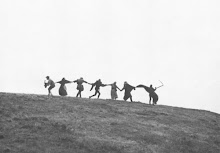 "Most people die of a sort of creeping common sense, and discover when it is too late that the only things one never regrets are one's mistakes."
"Most people die of a sort of creeping common sense, and discover when it is too late that the only things one never regrets are one's mistakes."Oscar Wilde was a poet, playwright, and celebrity — one of the few pre-20th century people who were "famous for being famous". The son of a prominent Irish doctor and a writer, Wilde determined at an early age that Art was the highest virtue, and the one's main Art form should, ultimately, be one's Life. Brilliant, witty, and very dramatic, he embraced a flamboyant aesthetic and a lifestyle that conspicuously rejected conventional hypocrisies.
One very prevalent hypocrisy of the day was the attitude toward homosexuality: privately, it was widespread, with a large proportion of men, particularly of the middle and upper classes, experimenting with it at some point in their lives. Outwardly, it was ignored, denied, and condemned as sinful. Wilde, although married with two children, eventually chose to live openly as a homosexual, deliberately drawing attention to the gap between public attitudes and private practice. By doing so, he made many enemies. One of them, the father of one of his lovers, publicly insulted him so many times that Wilde decided to sue him for libel.
The trial was a public sensation, widely reported in the media and avidly followed by a divided public. Eventually charges were dropped when it became clear that his enemy was willing to do anything to destroy him, including forcing Wilde's friends to testify under oath as to his conduct. But it didn't end there. As soon as the trial was over Wilde himself was arrested for "gross indecency" (i.e. "homosexual acts not amounting to buggery"). He was tried, found guilty, and sentenced to two years' imprisonment with hard labour.
Prison was very hard on his health, and on his finances. He was released in 1897, broke, and spent the last three years of his life outside of England. He settled in the Hotel d'Alsace in Paris, where he is famously quoted as saying "My wallpaper and I are fighting a duel to the death. One or other of us has got to go." A month later, he did.
 He died of cerebral meningitis. His doctors stated that the source of the meningitis was an old suppuration of the right ear. On his deathbed, he converted to Catholicism, receiving baptism and extreme unction in succession. He was bured in a cemetery outside Paris, but later moved to Père Lachaise Cemetery, where his tomb can be found today, covered with lipstick kisses from admirers. The angel sculpted into it originally had genitalia, which were broken off as they were considered obscene. They were kept as a paperweight by the cemetery staff for a number of years but nobody knows where they are now.
He died of cerebral meningitis. His doctors stated that the source of the meningitis was an old suppuration of the right ear. On his deathbed, he converted to Catholicism, receiving baptism and extreme unction in succession. He was bured in a cemetery outside Paris, but later moved to Père Lachaise Cemetery, where his tomb can be found today, covered with lipstick kisses from admirers. The angel sculpted into it originally had genitalia, which were broken off as they were considered obscene. They were kept as a paperweight by the cemetery staff for a number of years but nobody knows where they are now.Sources: Wikipedia, The Free Library






























